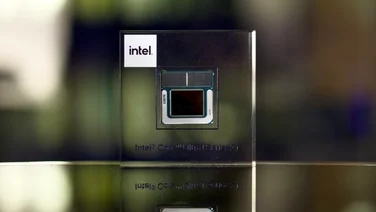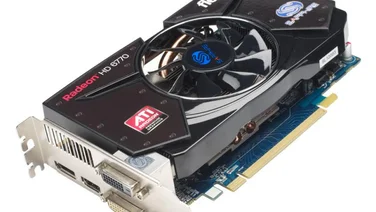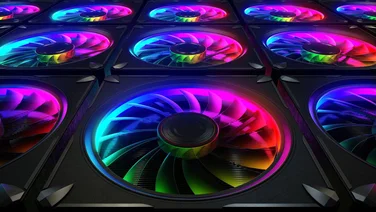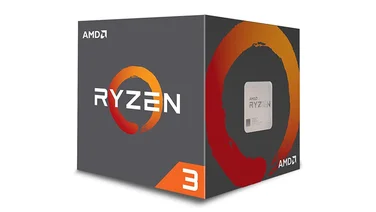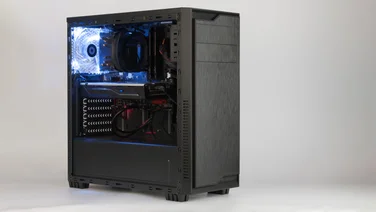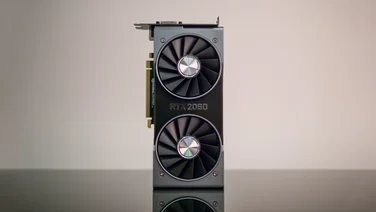To help us provide you with free impartial advice, we may earn a commission if you buy through links on our site. Learn more
- How to buy the best hard disk for you
- Should I buy an HDD or an SSD?
- How many terabytes do I need?
- Do I need to worry about performance?
- What about hybrid drives and Intel Optane Memory?
- Are platter counts, spindle speeds and cache sizes important?
- What happens if my hard disk fails?
- The best internal hard disks to buy
- 1. Seagate BarraCuda: The best value high-capacity hard disk
- 2. Western Digital Black: The best high-performance HDD for intensive use
- 3. Seagate FireCuda: The best hybrid hard disk
- 4. Western Digital Blue: A great budget HDD
- 5. Western Digital Red: The best HDD for NAS drives

The ever-decreasing price of solid state drives (SSDs) means that traditional hard disks are less commonplace than they once were. However, as media libraries grow larger, and 4K video becomes commonplace, there’s still a role for affordable, high-capacity storage – and that’s where hard drives are at their strongest.
The question is, which hard drive should you buy? Does performance matter, or should you just go for the cheapest model? Here’s our verdict on five of the best hard disk models you can buy.
How to buy the best hard disk for you
Should I buy an HDD or an SSD?
Nowadays, if you’re buying a hard disk it’s most likely as secondary storage for a desktop system. Under all circumstances we’d recommend using an SSD as your system drive: the performance difference is simply too good to miss out on.
What if you’re using a laptop or a compact PC that only has space for one drive? In that case, your best bet is to equip it with the largest SSD you can afford. Or, go with a modest solid-state system drive and use an external hard disk, NAS drive or cloud storage for your personal files. In this list we’ll focus mostly on high-capacity 3.5in desktop drives.
How many terabytes do I need?
A terabyte is a hell of a lot of storage – it’s enough to store around 285,000 songs in MP3 format, or roughly three million Word documents. There’s a good chance that if you tot up all the files on your computer and tucked away in various cloud storage services, they’ll come to much less than a terabyte.
That doesn’t mean you’ll never need more, however. Big collections of digital photos and media libraries are eating up space, especially with the rise of 4K video – and as working from home becomes more popular you might end up with big document archives to look after as well. You might also want to keep backups of your downloaded installers now that games and applications no longer come on physical media.
So, it makes sense to give yourself plenty of headroom and make sure that you won’t have to go through the hassle of expanding your storage again in a year or two. As a rough guide, we’d suggest that 2TB ought to be enough to cover modest storage needs for the foreseeable future: more hardcore users should consider going up to 4TB.
Do I need to worry about performance?
Performance is hugely important for your system drive, since Windows is constantly reading and writing dozens of files at once. For a storage drive, it’s much less of an issue. It’s likely that it’ll only be required to access one or two data files at a time, and even the slowest drive is easily fast enough to stream high-definition movies without breaking a sweat.
However, if you want to do something more intensive – such as editing large batches of RAW photos, or creating your own videos or complex musical compositions – then it’s worth looking for a high-performance drive. The fastest models can read and write data around 40% faster than the slowest, and they also offer shorter access times, so files can be opened and closed more quickly.
What about hybrid drives and Intel Optane Memory?
A hybrid drive is a regular hard disk that features a small built-in SSD, which it uses to accelerate performance. It works by learning which files you access frequently and caching these in the high-speed solid-state storage. Since it’s all handled silently by the drive controller, it’s very hard to say anything with confidence about what sort of performance benefit you’ll really see. What’s certain is that the drive won’t be able to cache all of Windows and your frequently used applications, so you won’t experience performance that’s as good as you’d see from a regular SSD.
Intel Optane Memory drives, on the other hand, can massively accelerate a fully mechanical drive. These resemble M.2 SSDs, and plug into the same slot on the motherboard, but instead of acting like a separate drive they become an ultra-fast cache for the main HDD. Unlike hybrid drives, we’ve seen Optane-boosted hard disks exceed 1,500MB/sec read speeds, so they’re great for accelerating a PC that only has HDD storage; you don’t have to move your Windows installation over, either.
Should you start from scratch with an HDD/Optane combo, though? Intel’s drives start at around £50, so they’re not expensive at all, but for that money you could buy a proper SSD instead. That’s still worth doing as although Optane helps out immensely with read speed, it doesn’t speed up write speed as well, so SSDs will still have a speed advantage there. Optane is really more for breathing new life into older systems with an existing HDD.
Are platter counts, spindle speeds and cache sizes important?
They’re important in that they have a direct impact on a drive’s performance. Generally speaking, drives with more platters are faster because they can read and write more bytes simultaneously. A higher spindle speed means that it takes less time for the disk to access the right sector and start reading or writing. A bigger RAM cache works a bit like the SSD portion of a hybrid drive to speed up read and write operations.
Unless you’re a real technical enthusiast, however, you don’t need to worry about these details. The best way to compare drives is to look directly at real-world performance: for the drives reviewed below, we’ve measured this using the popular AS SSD and CrystalDiskMark benchmarks.
What happens if my hard disk fails?
All hard disks come with a warranty, which typically last between two and five years. Unfortunately, this normally only covers the physical drive: if your data gets wiped out owing to a mechanical fault, that’s your tough luck.
As always, the only surefire way to protect your data is to back it up. That may be a pain when you’re dealing with multiple terabytes of data – cloud backup is likely to be expensive and it could take days for everything to travel up and down the line. It’s worth asking yourself which items are irreplaceable and which you could download again if need be.
You could also consider buying multiple drives and setting them up in a RAID configuration in such a way that if one fails you can still recover your data from the other. Not all motherboards support this natively, though. Really, it’s a job better suited to a dedicated NAS appliance. You can also buy hard disks specifically intended for NAS roles, which are designed to withstand constant 24/7 use.
The best internal hard disks to buy
1. Seagate BarraCuda: The best value high-capacity hard disk
Price as reviewed: £98 (4TB) | Buy now from Amazon

This 4TB drive is the largest model in the BarraCuda series, and while it’s not the most capacious you can get – the Western Digital Red family goes up to 12TB – it should provide more than enough storage for personal use. It’s not the fastest disk out there, either: it uses just two 2TB platters, combined with 256MB of cache, to deliver read and write speeds of around 165MB/sec.
The BarraCuda’s real strength is its incredibly low price, which works out to just 2.5p per gigabyte. It’s comparatively power-efficient, too, with standby consumption of 0.25W, idle usage of 2.5W and operating usage of 5W. Other drives are slightly faster, and slightly quieter – the BarraCuda’s noise level of 37dB was 0.6dB higher than that of the Western Digital Blue, and the difference was audible. Even so, for high-capacity data storage on a budget, you can’t go wrong.
Key specs – Form factor: 3.5in; Spindle speed: 5,900 RPM; Cache memory: 64MB; Interface: SATA 6Gbits/sec; Other capacities offered: 500GB, 1TB, 2TB, 3TB; Warranty: 2 years
2. Western Digital Black: The best high-performance HDD for intensive use
Price as reviewed: £202 (4TB) | Buy now from Amazon

The WD Black range has a reputation for high performance – but we found speeds weren’t nearly as fast as the WD Red 6TB drive, at around 188MB/sec in both directions. Some of that is simply down to the 6TB disk’s higher capacity, but the performance gap is big enough to indicate that the WD Red would still be ahead even if the capacities were the same.
Where the WD Black drive wins is access time: here it’s 25% faster than Seagate’s BarraCuda Pro, and more than three times as fast as the regular BarraCuda drive. This means responsiveness is excellent, and it’s quieter than the BarraCuda Pro too – we measured it at 38dB when spun up but not accessing data. At 4.9p per gigabyte it’s not the cheapest drive, but it’s ideal for anyone seeking speedy storage for bulk data that will be accessed and changed frequently.
Key specs – Form factor: 3.5in; Spindle speed: 7,200 RPM; Cache memory: 128MB; Interface: SATA 6Gbits/sec; Other capacities offered: 500GB, 1TB, 2TB, 6TB; Warranty: Five years
3. Seagate FireCuda: The best hybrid hard disk

Price as reviewed: £50 (2TB) | Buy now from Amazon
Seagate’s FireCuda drives combine a traditional hard drive with an SSD buffer to improve performance – which explains the high price of 4.2p per gigabyte. The 8GB portion of included NAND flash memory is far bigger than your typical RAM cache, but it isn’t big enough to accelerate all the programs and Windows components you regularly access to full SSD speeds.
Still, it does make a difference, especially to write performance: we recorded decent read speeds of 188MB/sec, and a very good 208MB/sec for sustained writes. Random-access write performance was excellent at 4.9MB/sec: most drives struggle to hit 2MB/sec, and even the BarraCuda Pro only managed 3.2MB/sec.
Seagate provides a five-year warranty with these drives, so it should last at least that long with typical use, and noise levels aren’t bad at 36.5dB. If you don’t want the hassle of working with two hard disks, it’s a tempting choice – and the smaller 2.5in frame means it’ll fit in a laptop too.
Key specs – Form factor: 2.5in; Spindle speed: 7,200 RPM; Cache memory: 8GB; Interface: SATA 6Gbits/sec; Other capacities offered: 500GB, 1TB; Warranty: 5 years
4. Western Digital Blue: A great budget HDD
Price as reviewed: £90 (4TB) | Buy now from Amazon

Western Digital’s Blue range comprises its “value” drives, so while this 4TB unit is certainly cheap – you’re paying just 2.5p per gigabyte of storage – raw performance isn’t a priority. A spindle speed of 5,400RPM means it’s less responsive than pricier rivals, and sequential read and write speeds only hit around 130MB/sec in our tests. You also get just a two-year warranty.
On the upside, the 4TB Blue drive offers comparatively low power consumption as well as quiet operation: in standby mode it consumes just 0.4W, while at idle, this figure rises to just 3.4W, and only hits 5.3W in operation. It’s a drop in the ocean compared with other components in your PC, but you’ll notice the difference if you’re running a stack of drives. As for noise, this drive hit 36.4dB from 30cm away while idle, making it much quieter than the high-end drives: you’ll barely notice it over moderate fan noise.
In all, it’s a great alternative to the Seagate BarraCuda: while it’s not quite as nippy, the price is hard to beat and it’s very quiet too.
Key specs – Form factor: 3.5in; Spindle speed: 5,400 RPM; Cache memory: 64MB; Interface: SATA 6Gbits/sec; Other capacities offered: 500GB, 1TB, 2TB, 3TB, 6TB; Warranty: Two years
5. Western Digital Red: The best HDD for NAS drives

Price as reviewed: £143 (6TB) | Buy now from Amazon
This is pricier than a lot of 6TB hard disks, even by the standards of those created specifically for use in NAS, as this is. Nonetheless, its high performance makes it a worthwhile investment: we measured it hitting a sequential read speed of 229MB/sec and a sequential write speed of 244MB/sec.
Despite it only having a 5,400RPM spin speed, these results mean it outperforms 7,200RPM drives such as the Toshiba N300 (which measured 208MB/sec in both read and write tests), the Seagate BarraCuda Pro (227MB/sec read, 186MB/sec write) and, of course, the WD Black.
The three-year warranty isn’t the longest, but unlike the standard BarraCuda or the WD Black, the WD Red has been specifically tested for the unique conditions of NAS usage. In other words, it’s less likely to develop faults or overheat when left running for extended periods.
Key specs – Form factor: 3.5in; Spindle speed: 5,400 RPM; Cache memory: 64MB; Interface: SATA 6Gbits/sec; Other capacities offered: 1TB, 2TB, 3TB, 4TB,5TB, 8TB,10TB, 12TB; Warranty: Three years







